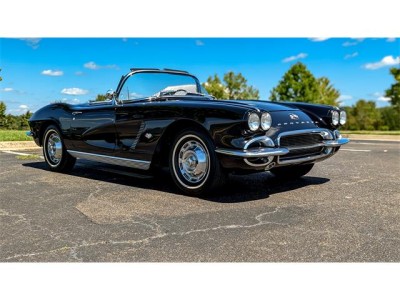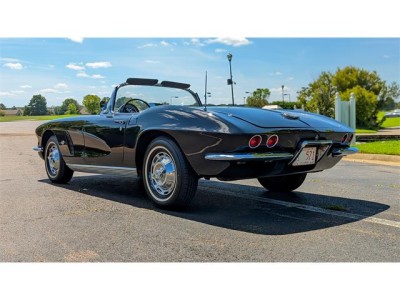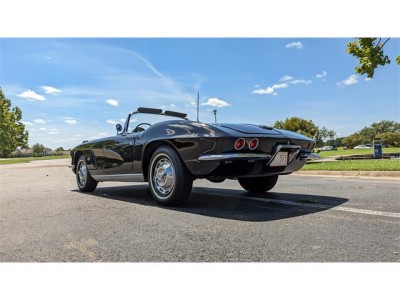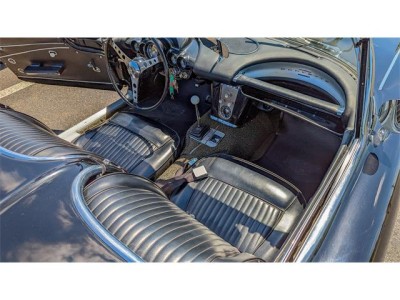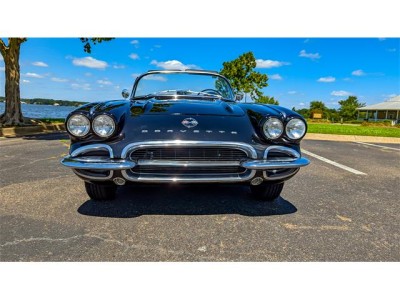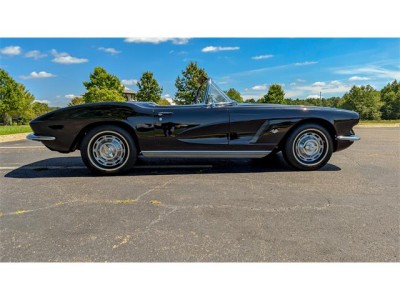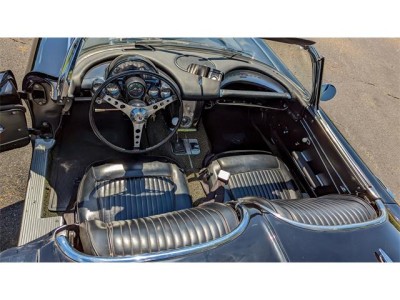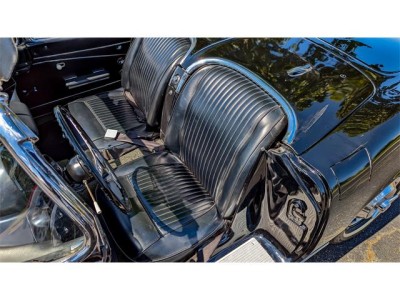Vehicle Description
The car itself was produced with a 327 cubic inch engine with 340 horsepower. It had high performance cylinder heads, intake manifold, carburetor and camshaft. This engine was second in horsepower only to the 327 fuel injected engine in 1962. The car had its original Borg Warner 4 speed manual transmission and had both tops- a convertible top and a second removable hard top. There were few power accessories offered in 1962 and so such options as power brakes and power steering were not even available. The same was true for air conditioning. Although silver when new the car had been through a succession of colors, first black, then red and finally white. The interior was black.
The original engine for the Corvette was long gone. One has to remember that this car is over 50 years old! Trying to keep the Corvette as original to its original manufacture, a correctly numbered 327ci engine block in Wisconsin. Not only was it correctly numbered, it also had a casting date that closely matched the manufacture date of the car itself. The same was true for the correct cylinder heads, intake manifold, high performance exhaust manifolds and many other parts, including a high performance NOS (new old stock) forged crankshaft. This was a crankshaft still in its original shipping box from 1962. One other item purchased was a complete 1961 Corvette! This car was all to pieces and stored in a local self storage facility. Opening the door of this storage stall was akin to the opening of King Tut’s tomb. This car, which had a good body on a good frame, with 50% of all the original parts, sold quickly to a Corvette guy who had several early 60’s C1’s but had let all of them get away from him.
Disassembly began and the car was taken completely apart. Tom’s correct engine was taken apart and taken to a local, very competent machine shop for machining and balancing. New pistons, rods, bearings, and camshaft (with a grind very similar to the original) were installed with an eye toward dependability and drivability. The body was removed from the frame with the thought that the frame would be finished first. The frame was sandblasted and then primed and painted. The intent was to finish the build out of the frame before putting the unpainted body back on it. The engine was mounted in the frame along with the rebuilt transmission and completely rebuilt front and rear suspension. The exhaust system was mounted along with some electrical wiring. New brake and fuel lines were installed along with a rebuilt original gas tank. The new radiator and its shroud were installed. Then the complete unit was wrapped in plastic wrap to protect all the as-new surfaces from the paint and body work that was to come. There are many vendors that carry parts for these early Corvettes so getting most of the parts needed was not an issue. Paying for them is the issue!
The complete body was returned to the frame and body work began. The car had had a small crash or two through the years and its fiberglass body had some signs of this especially on the underside of the various panels. All of this was repaired to as close to “as new” as possible. The body had been stripped to the original fiberglass in one of its previous paintings so it was not necessary to strip it again. The original body had many ‘waves’ in it and there were many, many small hairline cracks in the fiberglass especially around the openings for the trunk and hood and these had to be addressed. The work took the car to a point where it was ready for painting. It was decided that more of the reassembly would take place including getting the car into a running and operating status before the final paint was applied. So some of the interior was installed along with all of the new wiring. A new air conditioning system was installed. The instrument cluster and windshield wiper motor had been sent off for rebuilding and these assemblies were reinstalled. The engine was started and ran in to break in the camshaft. The brakes were made operable along with the steering.
The car was masked where necessary and final prep for painting was done. The car was primed with epoxy primer and this was wet sanded prior to final painting. Axalta (DuPont) paints, primer and clear coat were used in the painting process. Once painted and cleared, the final paint was wet-sanded with 1000, 1500, 3000 and 5000 grit sandpaper, and the final paint is very nice. Final buffing took place and then final assembly, with much of the bumpers, trim, lights, windshield frame and glass, etc installed.
